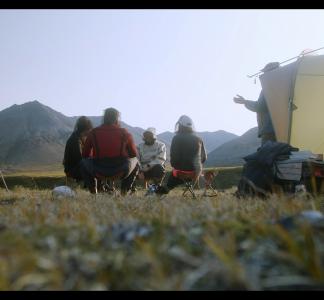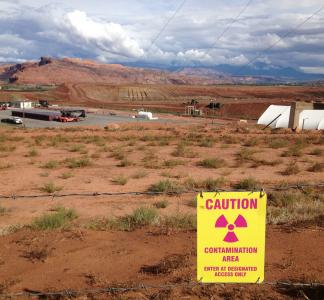5 ways Trump is attacking the environment on his way out the door

Gage Skidmore, Flickr
Lame-duck threats underscore need to hold the line
As an ousted lame-duck, President Trump has an unusually high capacity for wreaking havoc on the nation and democracy itself. Unencumbered by the need to govern or win over voters, myopic in the extreme, he is using a flurry of executive orders, among other tactics, to leave deep wounds that won’t easily heal.
That’s certainly true when it comes to conservation. The Trump administration has already infamously rolled back more than 125 environmental safeguards. Between now and Inauguration Day, Jan. 20, they are adding to that count and cementing as many existing attacks as possible to make it harder for President-elect Joe Biden and other lawmakers to undo the damage.
Between now and Inauguration Day, Trump will try to cement as many environmental attacks as possible to make it harder for President-elect Joe Biden and other lawmakers to undo the damage
We’re hopeful about the next four years. The Biden administration should offer many opportunities to confront climate change; conserve U.S. lands and waters; and ensure all people can access and benefit from public lands. But first we need to hold the line against Trump’s lame-duck attacks, whether through litigation, working with Congress or in the court of public opinion.
These are some of the biggest anti-conservation attacks we’re worried about, and preparing to rebuff, during the lame-duck period of the Trump presidency.
1. Shaking down and selling off the Arctic Refuge to pave the way for oil and gas drilling
Less than two weeks before the election, the Trump Bureau of Land Management put out a permit application to allow seismic exploration on the coastal plain of the Arctic National Wildlife Refuge in Alaska. But that anodyne term doesn’t capture the reality of this destructive, dirty process.
Here’s “destructive”: Under the proposal, heavy “thumper trucks” will cover hundreds of miles of the fragile landscape, blasting acoustic waves into the ground to capture data that will be used to build a model of subsurface oil and natural gas deposits. These seismic surveys will leave a grid of tracks gouged into the tundra and other surfaces (In recent years, tracks were still visible from the last time seismic testing was allowed in the refuge, back in the 1980s).
Representatives of the Gwich’in people, who rely on the coastal plain and the Porcupine caribou herd it harbors each summer, have criticized the rush toward oil and gas exploration.
The tests are likely to disturb wildlife (research from earlier this year suggests that despite promises by the applicant company to avoid harming polar bears in the area, dens can’t be detected reliably enough to avoid damaging them and threatening the mothers and cubs within). Representatives of the Gwich’in people, who rely on the coastal plain and the Porcupine caribou herd it harbors each summer, have criticized this headlong rush. Bernadette Demientieff, the executive director of the Gwich’in Steering Committee, said the hastiness of the process was “insulting to our people” and undertaken despite leaders repeatedly raising concerns to the Trump administration.
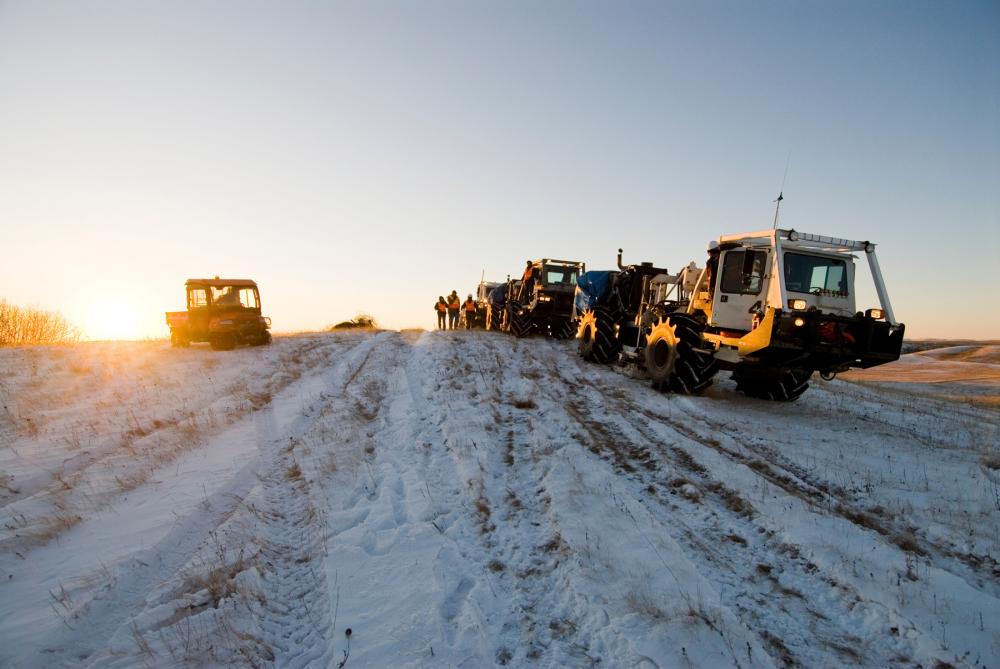
Seismic vibrator trucks that are used for oil & natural gas exploration
Rich Lasalle / Alamy Stock Photo
And here’s “dirty”: All this is meant to pave the way for the final, reckless push of the Trump administration’s efforts to drill for oil and gas in the Arctic. The Bureau of Land Management just recently announced it will auction off drilling rights in the refuge on Jan. 6, 2021, two weeks before President-elect Biden’s inauguration, even as the agency is still reviewing “nominations” from oil companies about which areas of the refuge they’d like to invade. That’s despite indications that even the usual industry backers are uneasy about violating this culturally and ecologically important land (a number of major banks have announced they will not fund any new oil and gas development in the Arctic Refuge).
If all goes according to the Trump plan, seismic permitting may be finalized and an Arctic Refuge lease sale will be held just days before Biden takes office. While time may run out before the Trump administration is actually able to turn drilling rights over to the highest bidder, any leases that are issued could be challenging for the new administration to overturn.
2. Making it easier to keep the public in the dark and rubber-stamp environmental destruction
A core Trump administration principle, or so it seems: polluters and corporate interests should have more freedom to exploit the environment, and we should have a harder time slowing them down. Repeated attempts to weaken the National Environmental Policy Act (NEPA) have been key to implementing that doctrine.
When the government launches a project like a new highway or oil pipeline, NEPA requires them to consider how it will affect the environment and local communities. It gives the people who will have to live with the consequences a fair chance to weigh in on it. Before an agency gets started, it first needs to explain and justify its plan—offering it up for public scrutiny, considering alternative options, accepting feedback about it and analyzing potential impacts. Under Trump, the White House’s Council on Environmental Quality, the body that oversees NEPA, has finalized changes that make it easier to keep the public in the dark about government projects; give federal agencies leeway to ignore how their actions damage the environment; and create more loopholes for certain activities to escape environmental review altogether.
The Trump administration has finalized changes that make it easier to keep the public in the dark about government projects and create more loopholes for certain activities to escape environmental review.
In the closing days of the administration, agencies are rushing to finalize their greatly watered-down NEPA practices. The lame-duck proposal to do seismic exploration in the Arctic Refuge (see #1 above) is the first test-case of these rollbacks. Additionally, on Nov. 19, the U.S. Forest Service finalized new NEPA rules that would make it easier to cut down trees and build new roads without having to engage local communities in the process. The rule may set a precedent that allows oversight loopholes across the 193 million-acre national forest system, amounting to a broad “permission slip” for logging and development. Other, similar rules are expected to follow.
3. Forcing a Utah highway through protected wildlife habitat and public lands
Red Cliffs Desert Reserve, just a few miles north of the Arizona border, is highlighted by the Utah Office of Tourism as one of the state’s treasured “places to visit.” And why not? It’s a stretch of visually stunning landscape where several regional ecosystems converge and wildlife including the threatened desert tortoise find refuge.
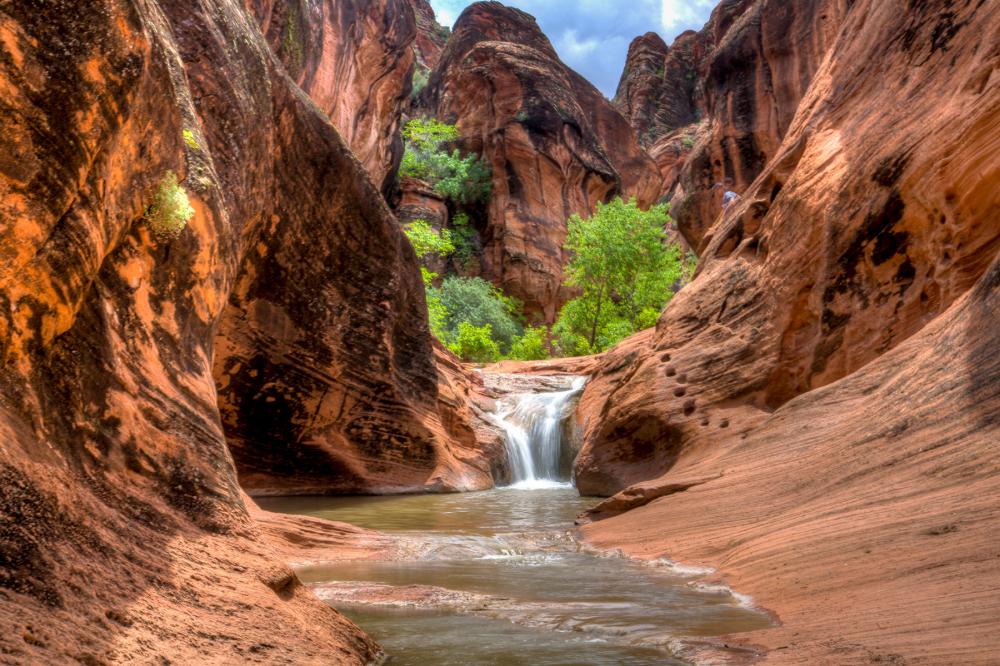
Red Cliffs National Conservation Area, Utah
Bob Wick, BLM
Probably less of a stirring tourist attraction: a four-lane highway, such as the one the Trump Bureau of Land Management wants to force through both the reserve and the Red Cliffs National Conservation Area that encompasses much of it. The Northern Corridor project could disrupt habitat for the tortoises, whose numbers have declined by some 90 percent since the 1950s, and fragment popular trails used by thousands of people each year. Red Cliffs is also thought to contain hundreds of petroglyphs and other archaeological sites, some of which are likely found on the highway route.
The Northern Corridor project could disrupt tortoise habitat and fragment popular trails used by thousands of people each year.
The Trump administration recently released its final Environmental Impact Statement for the Northern Corridor and is poised to approve the highway despite vocal opposition from local conservation groups, who say the government didn’t give fair consideration to alternate routes. There is also concern that the acquisition of land to build the highway was a misuse of a Land and Water Conservation Fund monies intended to conserve habitat. We’re working to hold the BLM accountable as the Trump regime rushes toward a final sign-off on the ill-conceived development.
4. Overwhelming western landscapes with plans that allow more drilling and development
The Trump administration is working to finalize a plan that could end up leaving hundreds of thousands of acres near New Mexico’s Carlsbad Caverns National Park vulnerable to drilling, in an ecologically diverse area representing some of the last relatively wild and untouched lands in the Chihuahuan Desert. Drilling activity in the already heavily developed area is likely to result from this plan (the Bureau of Land Management’s Draft Resource Management Plan called for a “preferred” option that would make nearly 97 percent of the Carlsbad planning area available to oil and gas leasing). It could degrade air quality and drinking water and threaten an extensive network of underground caves that is one of the U.S.’ true geological treasures. Of particular concern, it’s thought that further drilling in the Carlsbad area will introduce new hazards for migratory birds already hit hard by development over the last decade.
A series of sweeping plans could lock in the short-sighted Trump “energy dominance” agenda in western states for decades to come.
In addition, more drilling will increase greenhouse gas emissions in a region where fossil fuel development is already a major threat to our climate; oil and gas leases sold between January 2017 and September 2020 in the Carlsbad region alone could create the equivalent of 93.6 million metric tons of carbon dioxide, more than the total emissions from Washington state for an entire year.
Similarly, the Trump regime has designs on wildlands along the Arkansas River corridor in eastern Colorado. The BLM has proposed to protect less than 1 percent of the "wilderness-quality" lands in the planning area from activities like drilling and road-construction. Opening most of the landscape to development will threaten habitat for wildlife like bighorn sheep, elk and lesser prairie chickens.
In the last weeks of the Trump presidency, the BLM could rush to complete these planning processes with final environmental impact statements leading to a 30-day “protest period” and a final record of decision. These are two examples of a series of sweeping plans that could lock in the short-sighted Trump “energy dominance” agenda in western states for decades to come.
5. Undermining science and propping up weaker climate and pollution safeguards
As mentioned above, the spearhead of President Trump’s attack on conservation has been his effort to roll back dozens of environmental safeguards. In his last weeks before leaving the White House, Trump is continuing in that vein, and some of the rollbacks may prove difficult for Biden to reverse.
On climate change, the Trump Environmental Protection Agency could use the lame-duck period to finalize its rollback of emissions standards for new coal-fired power plants, solidifying a watered-down version that allows plants to release up to 35 percent more carbon emissions than under existing rules.
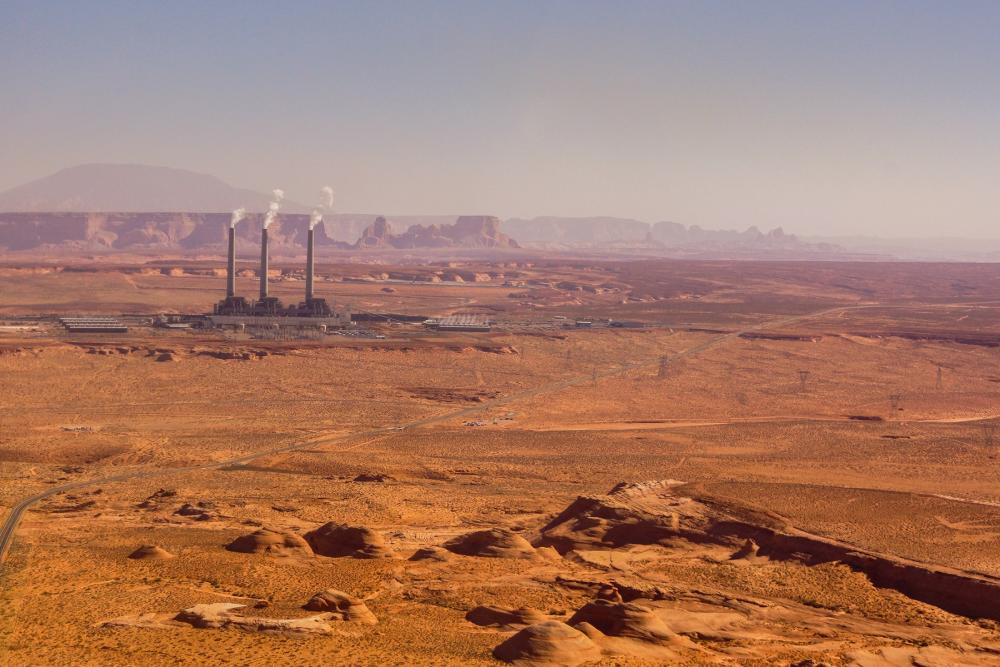
Page, Arizona.
EcoFlight
Air and water pollution restrictions seem to be due for similar curtailment. The Trump administration just announced standards that would retain outdated limits on soot pollution, ignoring evidence suggesting it kills thousands of people in the U.S. prematurely each year. Similarly, the EPA could soon finalize a decision to keep relatively lax standards for ground-level ozone—also known as smog—despite science showing the existing limits don’t do enough to protect public health and need to be updated.
A proposed rule could be used to throw out environmental and public health regulations that make use of private medical records.
Rigorous scientific and regulatory practice itself is also under attack. A proposed rule titled "Strengthening Transparency in Regulatory Science," which is set to be finalized by year’s end, could be used to throw out environmental and public health regulations that make use of private medical records—for example, confidential patient data linking air pollution exposure to premature death—on the grounds that it cannot be independently verified. Critics have charged that the proposal will disrupt important research, including efforts to track COVID-19 infections, but won’t actually improve transparency. A recently retired EPA science advisor has said the rule would create “chaos.” Another rule that could be published during the lame-duck period would change the way the EPA calculates the potential benefits of regulations under the Clean Air Act, barring consideration of indirect benefits and making it harder to justify vital anti-pollution rules.
